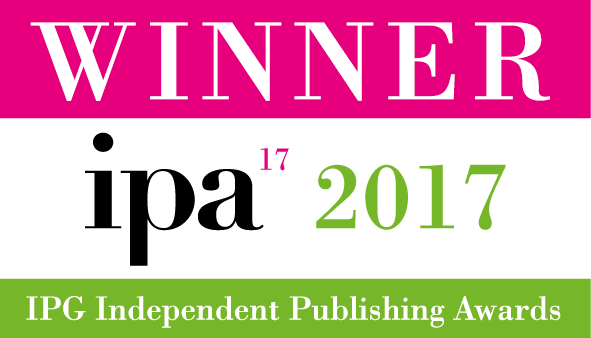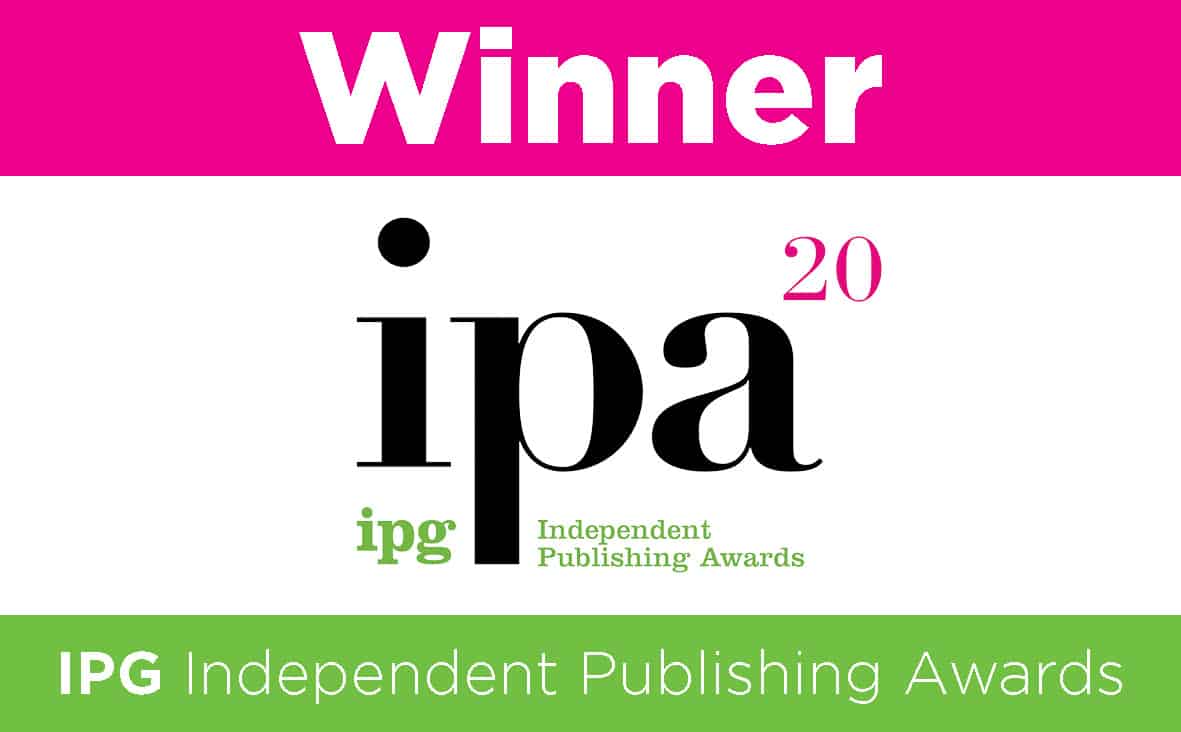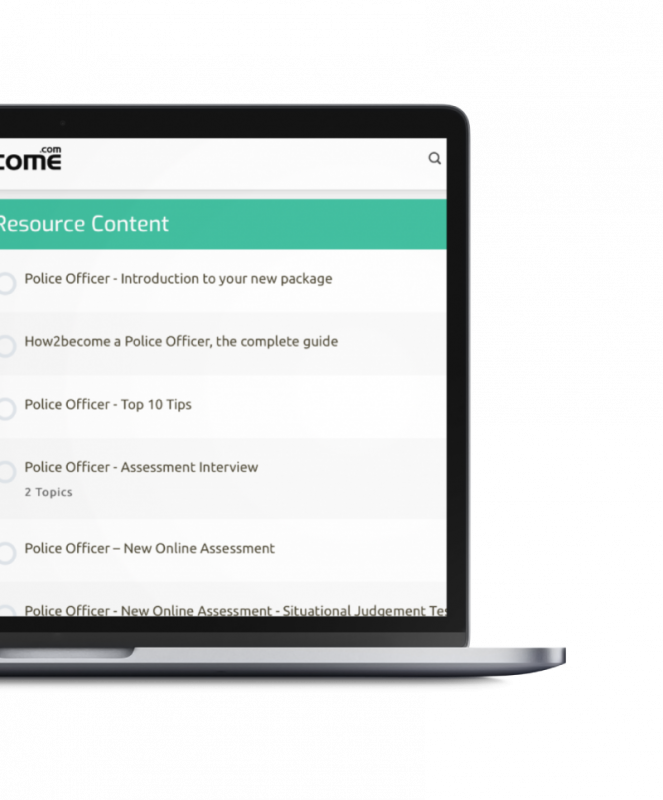LAW NATIONAL ADMISSIONS TEST (LNAT)
100s of realistic sample test questions, fully worked answers & explanations, for the National Admissions Test for Law.
4.9/5 Rating | 1,000+ Reviews ![]()
Training That Works
Discover insider secrets and a masterclass of testing practice material that has helped 100s of candidates pass their LNAT.
Unlock Your Potential
Whether you’re just starting out or you know what to expect, you will get access to 100s of questions, with solutions that will catapult your chances of success.
Powerful Resources
Get instant access to the material right now which includes guidance on registering, and preparing for the LNAT plus 100s of practice questions.
WHAT IS THE LAW NATIONAL ADMISSIONS TEST?

THE PURPOSE OF THE LNAT
Foremost, the LNAT was designed so that universities are able to assess candidates prior to giving them acceptance on to the course. Candidates need to be able to show strong levels of a particular set of skills; skills required for law students which will hopefully go on to become a successful lawyer.
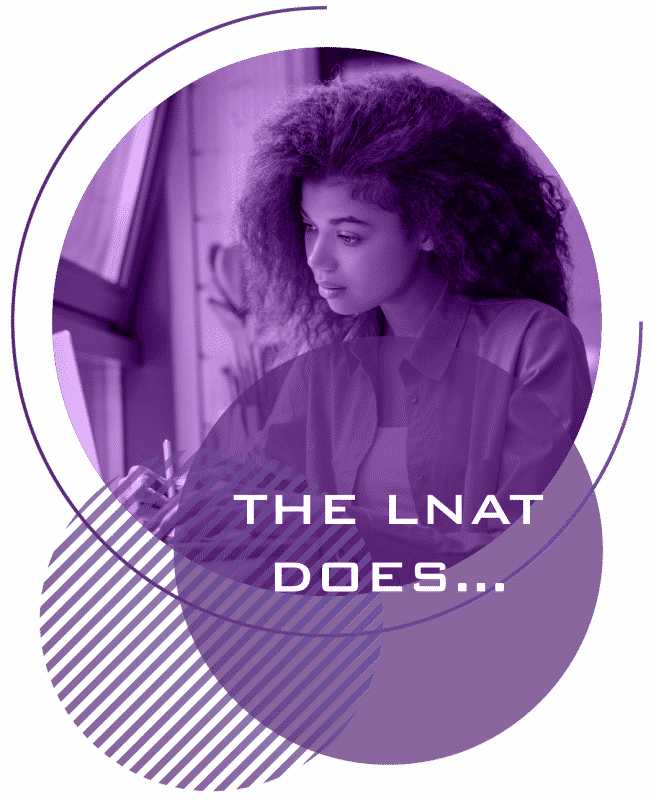
THE LNAT DOES
- Test candidate’s ability in regards to verbal reasoning;
- Assess candidate’s ability in deductive and inductive reasoning skills;
- Evauluate candidate’s bility in regards to understanding, interpreting, and analysing large amounts of information;
- Test candidate’s ability to distinguish between inferences, generalisations, opinions and conclusions.
THE LNAT DOES not
- Assess candidate’s intelligence regarding the law;
- Rely on candidate’s knowledge and understanding obtained from previous education;
- Expect candidates to have prior knowledge to the topics used in the assessment;
- Guarantee a candidate’s place at their chosen university.

PASS THE LNAT

- Demonstrate the ability to differentiate between inferences, abstractions, assumptions and generalisations by applying logical and critical analysis;
- Demonstrate high levels of critical thinking and logical understanding;
- Demonstrate high levels of reasoning and interpretation;
- Evaluate arguments and the position in which the author upholds;
- Focus on sufficient evidence to generate adequate support and justification;
- Analyse information to draw conclusions.
- Demonstrate writing ability in the style of an essay-based question, which will require critical analysis, persuasive writing and detailed points of view.
LAW NATIONAL ADMISSIONS TEST
– FREQUENTLY ASKED QUESTIONS
In order to complete an LNAT test, you will not be able to revise for the test as such. Instead, you will need to be able to demonstrate a particular set of skills and particular mind-set that is required to score highly on the test.
Predominantly, the LNAT combines strategic measurements and analytical approaches to assess your ability to understand and interpret information regarding current affairs. You will need to be able to illustrate your ability to interact with the following areas;
- Social;
- Economical;
- Technological;
- Cultural;
- Historical events.
The LNAT is used by certain universities to ensure that the students that they accept on to the course are ‘able’ students who show strong levels of progression. The test ultimately provides an in-depth evaluation of candidates and hopes to determine the strong candidates from those considered incapable of handling the demanding nature in which a law course entails. The LNAT measures a particular set of skills including:
- Analytical Ability;
- Reading Skills;
- Interpretations;
- Comprehensive Understandings;
- Inductive and Deductive Reasoning Skills;
- Verbal Skills;
- Strategic Approaches.
The LNAT will last for 2 hours and 15 minutes, during which you will have two sections to complete. The first section will comprise of 42 multiple-choice questions, based on 12 comprehensive passages. For each passage, it will contain 3 to 4 questions. For this part of the assessment, you will be given 1 hour and 35 minutes to complete all 42 questions.
The second part of the LNAT is in the style of an essay-based question. You will be given a choice of 3 questions, of which you must answer one. The essay will need to be typed and submitted in an electronic format. You will have 40 minutes in which to complete the essay.
You will be required to sit the LNAT, if the chosen university you have applied for is part of the LNAT Consortium. In other words, anyone who wishes to study an undergraduate law degree will need to take the assessment if the university that they are applying for, uses the test as part of their selection process.
The LNAT is a requirement for the following universities within the UK, EU and overseas:
UK UNIVERSITIES:
University of Birmingham
University of Bristol
Durham University
University of Glasgow
King’s College London
The University of Nottingham
University of Oxford
SOAS University of London
University College London (UCL)
NON-UK UNIVERSITIES:
National University of Ireland (NUI), Maynooth
IE University (Spain)
To: You
Subject: Acting Manager
—-,
Congratulations and thank you for taking on Andrew’s responsibilities as manager of the copywriting team while he’s away. We all appreciate that you have a lot on your plate with your own tasks, so we hope that the workload from managing the team won’t be too extreme.
As you know, Andrew likes to meet with each of his team members for a ten-to-fifteen minute catch-up once every two weeks. Andrew informed me on Friday that his last catch-up with the team was two weeks ago. Therefore, it would be great if you could get in touch with the rest of the team and find a time to meet with each of them. You’re probably well aware of what’s going on between everyone on the team, so hopefully a catch-up will be straight-forward. Please organise these for the end of the day.
In addition, I’d like you to take a look at some possible clients with projects that the team will be working on. I’ll send a brief report with each of the clients’ projects sometime later today, but if you could also decide on which (if any) of the clients to work with by the end of the day would also be excellent.
If you have any queries, or have any questions about your new role, don’t be afraid to get in touch.
Thanks,
Linda Peterson,
Managing Director
Task 1
Choose the most effective and least effective course of action:
| Most Effective | Least Effective | |
|
Hold a group catch-up with the entire copywriting team to save time.
|
||
|
Email or chat to each of the copywriting team members to find a time which suits them.
|
||
| Ask Andrea to send you a list of times which are likely to suit the copywriting team. | ||
| Choose a time which suits you for each catch-up meeting. |
In order to take the LNAT, you will be required to register online and fill in your application. Below, is a step-by-step guide illustrating the process of registering for the LNAT:
- Set up your online account: you will need to register an account via the following web address: www.lnat.ac.uk. You will need your UCAS identification number in order to register, however if you are registering before you are given your UCAS number, you will be able to continue with a ‘fake’ registration number which will need to be changed and updated as soon as your UCAS number arrives.
- Book your test: after you have registered an account, you will need to log on to your profile with the username and password that you provided when registering. You will then need to select the booking button, and proceed to make your confirmation. You will need to choose the LNAT venue that you wish to sit the day, and choose the date that you wish to attend the assessment.
- Making your payment: test fees are required to sit the LNAT. The cost for candidates to take the assessment is £50 for UK and EU testing centres, and £70 for a test centre outside of the EU. Details of the test centres can be found on the official LNAT website. You may be eligible for an LNAT Bursary if it is deemed that you are financially struggling. Be sure to check this out before submitting your application.
- Changing your booking: you are able to change your booking date, by rescheduling or cancelling your reservation. Tests need to be rescheduled before noon, two working days before the actual assessment if you wish to receive your payment back. Any cancellations after this time, will not receive their booking payment back.
The LNAT requires a great deal of attention in regards to reading comprehension and critically analysing information. The best preparation for a test like this, is to simply practice sample papers, testing questions and improve the key skills and qualities being assessed. Becoming familiar will undoubtedly better your overall performance. Reading quality newspapers will allow you to think critically in regards to:
- Issues being addressed;
- The assumptions being made;
- Information that is relied upon in order to reach a conclusion;
- The position of the author;
- What the main argument is;
- Thinking of counter-arguments to challenge the argument.
Listed below are some of the newspapers that are worth reading:
| The Economist | The Financial Times | The Guardian |
| The Independent | The NY Times | The Times |
| The Daily Telegraph | The Washington Post | The Irish Times |
SAMPLE LNAT QUESTIONS
To help you get a better understanding of what the LNAT involves, let’s take a quick look at a few sample questions.
FREE | 4 Questions
Law National Admissions Test Practice Questions
You will be given a passage to read. You need to make sure to read the passage carefully in order to answer the questions that follow. A sample passage below is on the distorted views of the media:
The Distorted Views of the Media
The myriad landscape of the media infiltrates every inch of the social world, and can be accessed almost anywhere, by anyone. The media has changed considerably over the years, from information reported through newspapers and television, to a world that is transfixed with the realms of online access. It highlights the major growths in how the world communicates, and how these modes of communications have changed considerably over time.
How then, can we be sure to trust the channels which we are single-handedly presented, and offer only a single form of interpretation? What is the quality of the information that we are receiving? Does media focus on quantity more than assuring quality? Ultimately, it is not so much about where the information comes from, but the extent to which these mediums produce reliable and partial accounts of news.
Media have become somewhat slanted in recent years, and no matter what the medium, the information that they create and produce can be, and is often, challenged. Criticisms in regards to the fabrications of distortion, manipulation and interpretation, suggests how publishers and distributors are more concerned with maintaining and accumulating circulation figures, as opposed to being centred on truth, justice and value. The fabrication of beauty and body image is a major issue that is often portrayed within an array of media formats. It continues to stir debate regarding how such images carry inaccurate and biased accounts of the truth, particularly in regards to women.
You will then be given 3 or 4 questions regarding that passage. Note, the questions are in the style of interpretative, stylistic and argumentative questions. They are used to determine how well you can interpret information, make conclusions and assumptions, and understand the overall argument in which an author or authors, are trying to make.
So, after you read the passage, you will be given a multiple choice question like so:
Within the third paragraph, the writer assumes that…
A – Newspapers are the foundation of distorted imagery.
B – Publishers of newspapers are the people who decide what gets printed in their paper.
C – Newspapers continue to adopt a writing style that is based on bias and controversy.
D – Distorted imagery cannot be avoided.
E – The media are responsible for the social issues in which girls face regarding body image.
You will then need to determine which of the answers best describes the author’s assumptions. Please note, that these questions are designed so that the answers are very similar. You need to pay careful attention to the use of words and language in the answers to determine how accurate the answer is.
The Threats of Social Networking
Social networking has unquestionably become a global phenomenon, which I believe is having a huge effect on our social world. Social networking sites such as Facebook, MySpace and Twitter have experienced exponential growth during the 21st century, and yet some users remain oblivious to how much their social networking profiles can shape, influence and affect their everyday lives.
Information that is posted on these sites is likely to come back and haunt a person in the future. Just think of a social networking site as a type of “global database”. You are posting information, facts about yourself, images etc, into your very own “database”; acting as a log of your personal behaviour for others to view. This is a great concern for many parents whereby they feel obliged to check how secure their child is whilst they’re online.
An example of the impact of social networking occurred in America, whereby students were faced with court charges for underage drinking, a situation that had it not been shared on their social networking profiles, would never have been known otherwise. The students in question were unaware of the impact of their behaviour of underage drinking and posting the evidence online.
Furthermore, employers often use these sites as a way of maintaining access to their employees outside of the working environment. Although this can be considered morally wrong, employers can track your profile in order to find controversial issues, sensitive matters or inappropriate misconduct.
Which of the following best describes the author’s tone in regards to his attitude about social networking sites?
A – Strongly pessimistic
B – Discouraged.
C – Guarded.
D – Upset.
E – Highly optimistic.
During the essay section of the LNAT assessment, you will be given 3 questions in which you must choose one to write your essay on. These questions are usually based on current affairs, common debate topics, which allow you to voice your opinion and argue your reasoning using support, evidence and justifications.
Answer one of the following questions.
Your answer should be a reasoned and substantiated argument, which justifies your response to the question that you have chosen
You have 40 minutes in which to draft and write your answer to one essay question.
1. “Euthanasia should be legal”. Discuss.
2. Should the death penalty be allowed?
3. “Violent games contribute to youth violence”. Argue.
You will then to plan and write your answer to one of the above questions. You should structure your essay like indicated below:
- INTRODUCTION. The introduction will be the first thing the reader will look at, and so it is important to make a clear and concise overview of what your essay is going to be about.
Your introduction should include the purpose of the essay, what your initial thoughts may be, what you hope to achieve/find, enumerate the points you wish to make, and define the overall importance of your argument and why it is relevant/significant.
- MAIN BODY. During the main body of your essay, you should remember to keep in mind the questions mentioned previously in regards to what, why, how and what if.
You need to make points and back them up using examples and evidence in order to strengthen your overall argument. There is no point making a statement, if you have nothing to back up the reasoning for it. Your argument needs to be straight to the point, persuasive and significant to illustrate what you are trying to say.
Usually, 3-4 high quality points is enough to make a good argument. Do not waffle. Expand on a few points and provide analysis and detail, as opposed to briefly mentioning lots of points and not going into enough detail about each of them. Your essay needs to read coherently.
- CONCLUSION. Your conclusion should summarise your whole argument. It is often said that a reader should be able to read an introduction and a conclusion, and still have a basic understanding of what your argument would be about.
Your conclusion should not introduce any new points, and should only sum up the points that you have written about previously.
The conclusion should be short, to the point and significant. If you can summarise your argument using three to four sentences, your reader will be impressed and know what you were trying to achieve.
Make sure that your conclusion refers back to the question you were given. Make sure that the question has been answered directly, and demonstrate where you stand on the subject matter.
Answer one of the following questions.
Your answer should be a reasoned and substantiated argument, which justifies your response to the question that you have chosen.
You have 40 minutes in which to draft and write your answer to one essay question.
1. What is equality? Does it really matter?
2. Make the best case for Government funding the arts programmes.
3. Why does ‘political correctness’ matter?
ANSWERS
B = ‘Publishers of newspapers are the people who decide what gets printed in their paper’.
The writer concludes from the passage that publishers focus on the importance of increasing their newspaper circulation, rather than maintaining efforts in regards to producing truthful and unbiased content. In order for the writer to come to this conclusion, the writer needs to assume that the publishers of the newspapers are the people in which decide what gets printed.
C = ‘Guarded’.
The word that would best describe the tone of the author’s writing in relation to his attitude concerning social networking is “guarded”. The author offers very “guarded” responses in association with the importance of security for social networking sites. Answer options A and E are quite extreme, and the fact that the author is not overly extreme or assertive in his responses, suggests that these words cannot depict his overall tone of writing. Answer option D, ‘upset’, is not a word that best describes his attitudes; the author shows more of a concern then he does an upset, and therefore does not reflect his tone of voice. Answer option B, ‘discouraged’, does not reflect the overall tone of the author. This term is used to illustrate melancholy or somewhat disheartened, but the overall tone of the author does not come across as disheartened.
ANSWER TO ‘EUTHANASIA SHOULD BE LEGAL. DISCUSS.’
We have provided you with key areas that you could include in this argument:
Dignity. Within a civilized society, it is argued that an individual should be able to die in a dignified and peaceful way, instead of waiting out for a disease to kill them, or become so inflicted with pain, that it is too much to bare.
Bodies are our own. It can also be argued that it is up to us with what we decide to do with our bodies. Our bodies are our own. We are allowed to make all kinds of decisions based on our body. For example, getting tattoos, piercings, having a baby, getting a transplant, getting plastic surgery etc, thus we too should be able to decide when our body has had enough and therefore can no longer prolong living.
Beliefs. Some people believe that suicide is not a crime. People commit suicide and no crime has been committed, and no one was in the wrong. Therefore, euthanasia should also not be a crime. The only difference between the two is that euthanasia usually requires the assistance of someone else. The assisted help from someone willing to let a person die ultimately fulfils a dying person’s wishes.
Changing attitudes. According to a study conducted in 2007, 80% of the public said that they wanted the law to change regarding assisted suicide and helping those to end their life.
ANSWER TO ‘WHAT IS EQUALITY? DOES IT REALLY MATTER?’
Defining equality. Equality is about ensuring that every individual within every society has an equal opportunity. Equal opportunities include the rights to work, female and male equal rights, reduce discriminations in relation to sex, gender, race, religion, disabilities etc. Equality is a way of maintaining a standardised message within culture that opportunities need to be distributed equally, and not seen to benefit someone of particular interest.
History of equality.. Within your essay, you could explain the history of equality, and how previous years have demonstrated a lack of equality amongst society, and how this has changed and evolved over time. Within contemporary society, we live in a world that is regulated and imposed with rules that prevent inequalities. However, you could argue that whilst regulations remain in place, inequality does still remain, and probably always will. Give an example of how people can challenge the current zeitgeist of society in relation to equality.
Significance. This is the second part of the question that you need to answer in order to gain high marks. You need to discuss the importance of equality and how this is important to culture. Inclusion, equality and opportunities are a central principle to build community capacity. Society needs a healthy and stable workforce and create citizens who conform to the rules and regulations of society. What is the importance of equality in relation to democratic societies?
Pass the LNAT. First Time.
Crafted for everyone, no matter your skill level or background, this download was made to help you achieve one goal: pass the LNAT exam.
WHAT WILL YOU LEARN?
Scoring Criteria
Essential information about how you will be assessed during the National Admissions for Law test.
LOTS OF SAMPLE QUESTIONS
Practice tests covering multiple-choice questions and essay questions.
PRACTICE SAMPLE TEST QUESTIONS
Step-by-step information on how to pass the LNAT.
FULLY-WORKED SOLUTIONS
Solutions for all questions so you can be confident in learning and improving your score.
INSIDER SECRETS
Insider tips on how to answer the questions and a breakdown on how you will be scored.
SCORE-BOOSTING STRATEGIES
Get ahead of the competition with unique and proven strategies 16 years in the making.
Customer Success Stories
Having helped 1,000s of people pass their assessment tests for over 16 years, it is no wonder our customers love us…

Fantastic, yet another great exercise book fit for the task at hand. Easy to understand from start to finish with a full comprehensive guide.

Great book, easy to read and understand. I have had a couple of books by ‘how to become’ and they never disappoint.

What a great book by how2become very good layout great test questions and easy paced learning i would totally recommend this book and how2become as a one stop shop for books to help you practice and ace test.

After reading this book you will not only have the confidence and skills needed to pass the LNAT but also the belief that you will succeed in whatever career path you choose to follow once you have passed the exam.

This is without doubt one of the most comprehensive books available to prepare for the LNAT.
Included: a mock test, exam material, prep for exams plus on the day of your exam advice, how to tackle the exams, includes sample multiple choice questions as well as the essay questions- this is invaluable – the focus is not just on how to write the perfect essay but also goes over the
basic structure and how to tackle each separate part to make your argument concise, plus 2 essays to write and then talks you through each part of the essay from the basic argument to giving an opinion – there are tips and examples on how best to answer each part of the essay question. Half the battle of writing a great essay is understanding the question and answering it fully in a structured way- this guide covers all of this and more.
WHAT’S INCLUDED IN YOUR DOWNLOAD?
Complete guidance to ensure you pass the selection tests.
- Detailed information regarding the LNAT.
- How to register for the LNAT.
- How to prepare for the LNAT.
- Sample questions that show you how to reach the answer.
- Hundreds of sample questions to work through.
- Detailed answers and explanations to all questions.
- An LNAT mock exam to illustrate what the actual test will be like.
PLUS…BONUS!
BONUS
PLUS…30-Day Free Subscription Trial To The Online Aptitude Testing Platform!
As well as life-time access to the LNAT download, this product also includes a 30-day free trial to Online Aptitude Testing Platform (usually £9.99 + vat per month).

- Additional practice questions to help boost your scores!
- Practice all of the test questions under timed conditions using our online testing suite.
- Instant online access.
- Compatible on mobiles, tablets and computers.
- Scores are tracked so you can focus on areas that need improvement.
Important: This powerful free trial costs £9.99 + vat every month for everyone else! You will get unrestricted access to all of the quick-win strategies to give you the advantage right away.
Worth £9.99, Yours FREE for 30-days*
*We want you to know: This is a subscription service that is charged at just £5.95 + vat per month after the 30-day trial expires. No minimum term. If you cancel before the 30-day trial ends, you will not be charged. Please see our terms for full details.
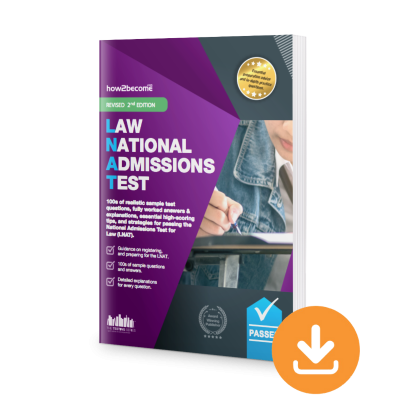
✓ 30-Day Money-back Guarantee

✓ 30-Day Money-back Guarantee
Did you know? All orders with How2Become are protected by our 30-day money-back guarantee. What ever the reason…or no reason at all…you can have your money back if this resource isn’t right for you (see our terms for full details).
WHY BUY WITH HOW2BECOME?
CREATED BY THE EXPERTS
PROVEN TRAINING
EXCLUSIVE FREE BONUSES
Firstly, these guides are created by us and our team of experts – we have all the answers to your questions and will help you succeed (like we’ve been doing for the last 16 years), we update our material frequently and you can contact us at any time with any questions you have.
Secondly, we provide exclusive bonuses with all our products that you won’t find anywhere else. These bonuses include free guides, powerful online testing suites and more!
Finally, our guides and training just work. Take a look at our TrustPilot page where you will see our rating of 4.9/5. There, our customers share their positive buying experiences and more importantly the time-saving success our resources have given them (hint: they passed their assessment).

Learn how to PASS THE LNAT
We’ve helped 1,000s of aspiring applicants in their journey to succeed in a new career. Trust the UK’s #1 careers and education specialists to help you secure your role.
Get instant access »“Great variety of question types, exposes areas of weakness and gives you the means to improve. Clear and concise. Confidence builder. Great practice!”








